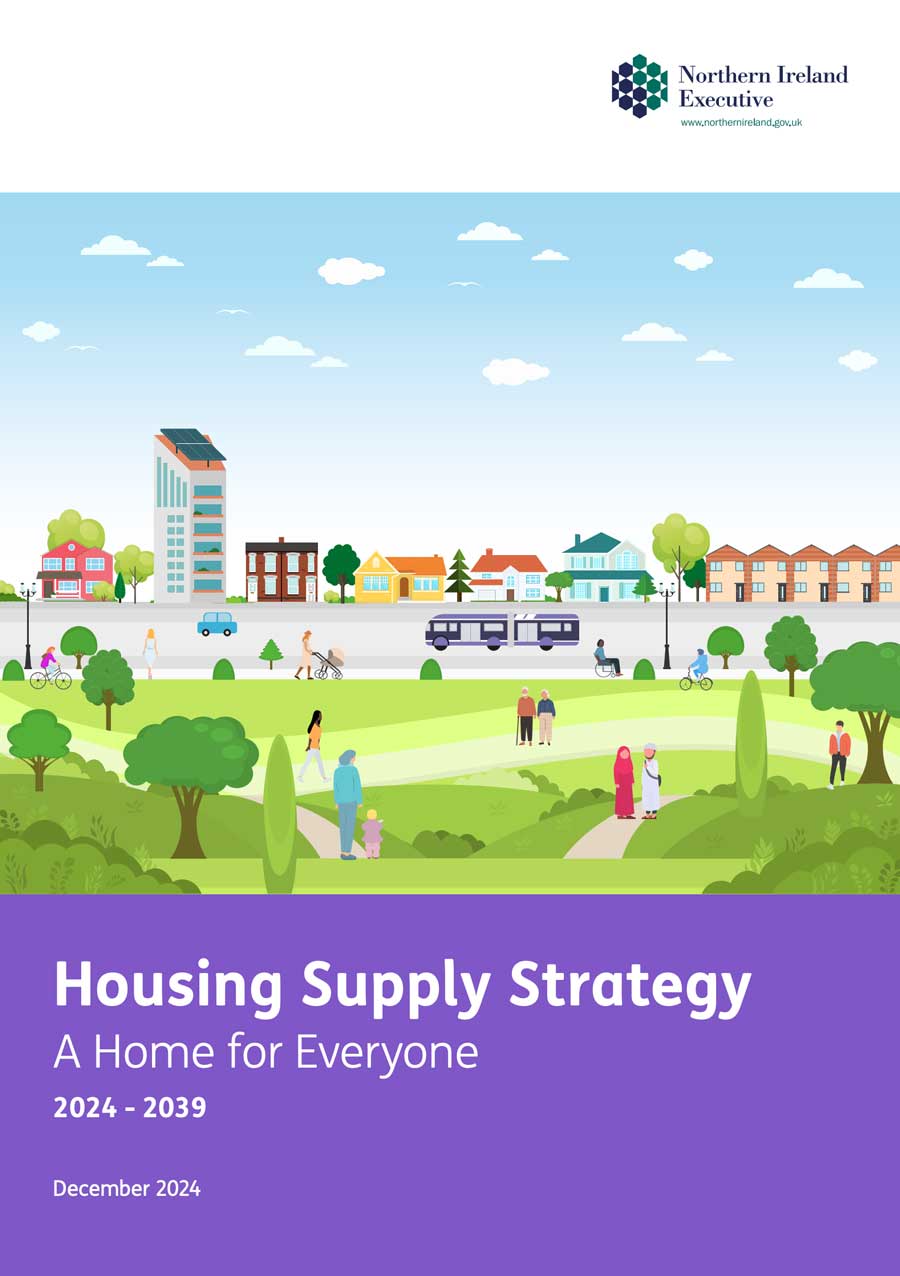Ballygally, Country Antrim
Image: Istock
Northern Ireland’s housing landscape
Despite record demand for social homes in Northern Ireland, housing delivery is at its lowest level since the post-war period. So what are the obstacles to building these much-needed homes?

GROWTH, REGENERATION & DEVELOPMENT

John McLean
Chief Executive, Radius Housing

John McClean
Chief Executive, Radius Housing
Issue 80 | October 2025
Amid funding uncertainty, stubbornly high construction costs and years of under-investment in infrastructure, Northern Ireland-based social housing providers are having to demonstrate new and innovative delivery methods.
Despite their best efforts, the demand for social homes is at record levels. If fully adopted, The NI Executive’s Supply Strategy together with ambitious proposals from the business community offer a way forward for potentially building up to 100,000 new homes over 15 years.
Meanwhile, associations are working together with local communities to create a more shared and inclusive society where all citizens can thrive and live with dignity and respect.
The data
With a population of just under 2 million, Northern Ireland’s housing market growth is modest at 5%, with 7% estimated as being born outside of the province. Some 18% of the population are older than 65 while more than a quarter of those of working age are economically inactive. With 49,000 on the waiting list, 38,000 of these households live in housing stress, while a further 4,000 present as homeless.
While the Northern Ireland Housing Executive (NIHE) manages 83,000 of the social rented dwellings, 20 housing associations manage the remainder and have been the sole developers of new homes since the 1980s.
One association, NI Co-ownership, is the regional provider of shared ownership, having helped more than 33,000 households since the late 1970s into homeownership. Should borrowing restrictions be lifted on the NIHE as expected, then it will likely return to social housing development in the future. Meanwhile, social housing allocations are centrally managed through the Common Selection Scheme, a points system administered by the NIHE.
Locally the average price for a house is around £273,000. Between January and March 2025, 1,275 new social homes were started onsite together with 667 completions. The main delivery methods are through traditional build, off-the-shelf, and design and build. Planning gain is still in a conceptual state, providing less than 0.5% of output.
applicants are on the NIHE waiting list, with 38,000 of these households currently living in housing stress
households presented as homeless, of which 35.4% were single males and 27.9% were families
social homes are managed by NIHE and the remainder are managed by 20 housing associations
new social homes were started onsite in the first quarter of 2025, while 667 homes were completed
Source: Northern Ireland Statistics and Research Agency (quarter ending 31 March 2025)
Political response
Local government was reorganised in 2015, returning planning powers from central government to 12 new local authorities. They have been preparing Local Development Plans (LDPs) since then, but progress has been slow. Most LDPs will have policies requiring a percentage of new housing to be affordable and that definition includes social housing and intermediate housing for rent or sale. Land will be allocated in the LDPs for new housing with policies on design and tenure-mix etc.
In 2024, the NI Assembly sought to transform housing supply through a collective and committed response from local government, the voluntary and community sector and private sectors. Its whole-system approach, putting people, places and communities at its heart, was set out in a Supply Strategy covering 2024-2039. It was intended to create a housing system for delivering on our housing needs and demands, including at least 100,000 homes, a third of which were to be social homes.
“Currently, many private and social housing developments with planning permission are being delayed by a lack of mains sewerage connections.”
Lack of infrastructure
Regionally the big issue is a lack of capacity in wastewater infrastructure following years of under-investment. At this time, the NI Assembly’s finances are facing unprecedented strains, prompting local businesses and the construction sector to lobby the main political parties to consider additional tax raising, as well as borrowing by the arms-length regional water body. Currently, many private and social housing developments with planning permission are being delayed by a lack of mains sewerage connections. Indeed, there has been a halt to all housing construction in 23 towns across Northern Ireland.
Most recently, the Construction Employment Federation, the NI Federation of Housing Associations and the Chamber of Commerce commissioned a paper entitled ‘Confronting NI’s Wastewater Crises’. A highlight from the paper confirms: ‘Housing delivery, which is currently at its lowest level since the post-war period, will continue to fall adding to rising rental costs and housing stress, and resulting in a loss of 1,690 jobs in the construction sector, and a further 870 from indirect employment. A massive £1.3 billion in construction investment will be forgone, impacting everyone in Northern Ireland.’
So far, the parties in power appear unable or unwilling to implement the required policies.
Local output
For many years, local developing housing associations delivered more new starts per head of population than other parts of the UK. However, in the past two years, as the local assembly faced very challenging budget cuts, the associations have had to operate with greater resilience and agility.
Decarbonisation funding available to associations elsewhere in the UK is unfortunately not on offer in Northern Ireland. While locally almost 85% of association housing stock is rated in the EPC A-C category, compared to 65% for the remainder of property types, the region is well short of decarbonisation targets set under the Paris Climate Agreement.
As with other parts of the UK, most local associations have expanded their social investment offering in pursuit of greater tenancy sustainability. A particular success has been the Together Building United Communities (TBUC) initiative, sponsored by the NI Assembly and aimed at creating shared and inclusive communities for all.
Not only is this initiative helping to resolve the religious divisional issues of the past but is also helping those coming from overseas to set up home and integrate successfully into communities. Laterally, several associations together with the local housing federation, NIFHA, successfully collaborated on an EU-funded community investment programme.
Future-focused
Northern Ireland housing associations have a track record of prevailing in the face of economic and social challenges. Through the professionalism and creativity of our people, working in collaboration with tenants and one another, we will maximise the use of our resources in pursuit of the greatest positive impact across our communities.
“For many years, local developing housing associations delivered more new starts per head of population than other parts of the UK. However, in the past two years, as the local assembly faced very challenging budget cuts, the associations have had to operate with greater resilience and agility.”


